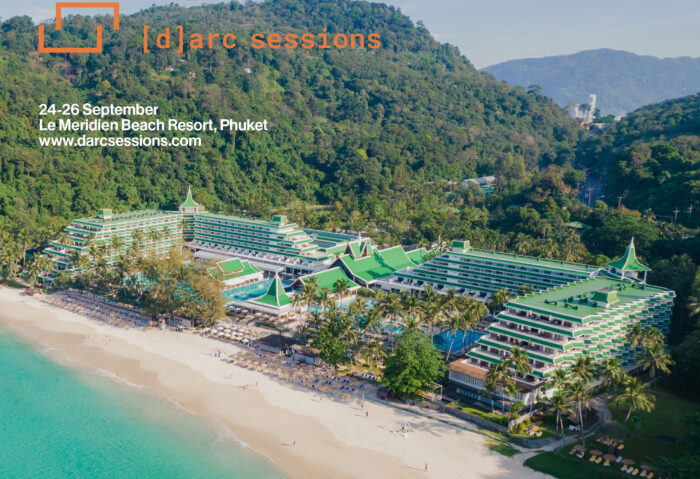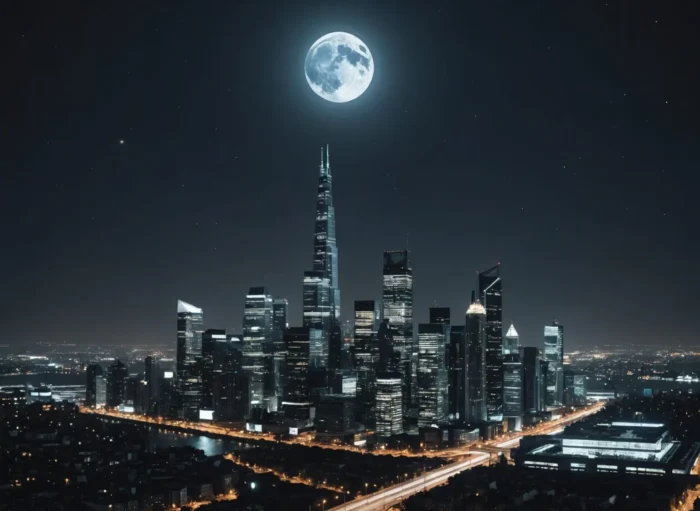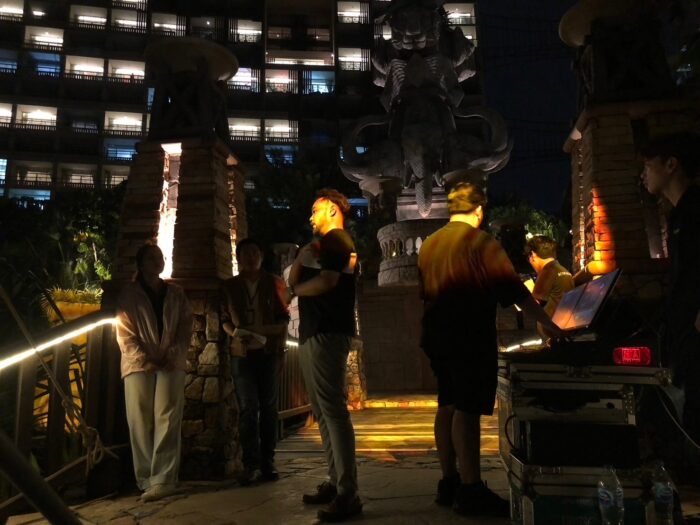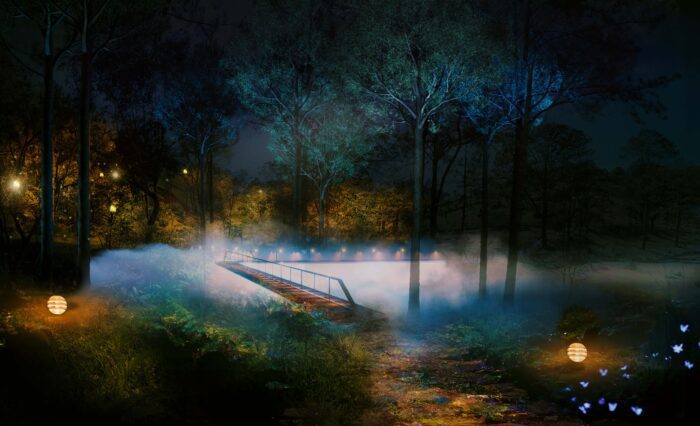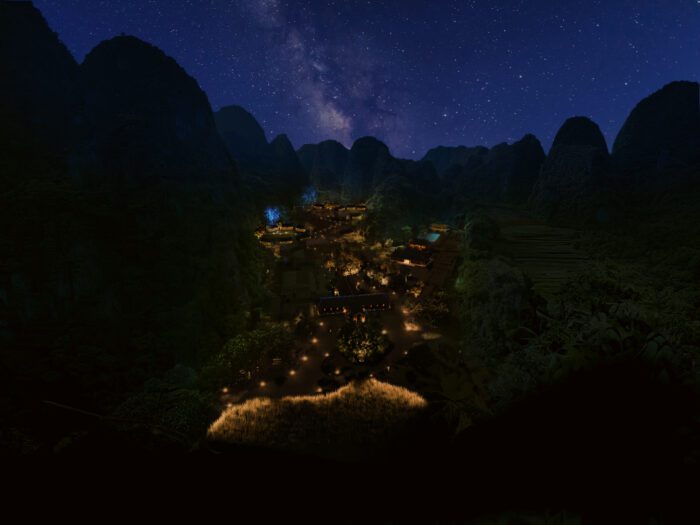🌟Returning from the Urban Lighting workshop in Seoul, I was able to introduce a fresh perspective on urban lighting. This...
Read MoreScenoLight Atelier – Architectural & Experience Lighting
LIGHTING POLLUTION IN WATERFRONT CONTEXT

As creative lighting designers, we extremely concern about the nighttime environment context, which is very variable from one site to another, particularly when we are involved in seaside projects. The seaside night environment is not uniform; therefore, it can split into at least three zones, from the last point of view on the water until the waterfront, the contact point with a large horizon, and the great spot to enjoy the sunset and starry night. Thus, as lighting designers, we aim to preserve these feelings, while we have to deal with the legibility and safety constraints, and also be aware of lighting pollution.
Less than 100 years ago, everyone could look up and see a spectacular starry night sky, but now, in our modern world, most of us will never have the chance to experiment with the Milky Way. So, today, as a consequence of living in light-polluted cities, people tend to choose peaceful areas to enjoy moments of relaxation, comfort, and the experience of watching the sky along the waterfront is part of this moment. However, it is not easy to fully feel that emotion as artificial light increases and spreads widely which directly impairs our view of the universe and negatively affects our environment, humans, animals, and plants’ health. Most of us are familiar with air, water, and land pollution, but light pollution is being overlooked. The inappropriate or excessive use of artificial light is known as light pollution. Components of light pollution include:
- Skyglow – brightening of the night sky over inhabited areas
- Light trespass – light falling where it is not intended or needed
- Clutter – bright, confusing, and excessive groupings of light sources

A night starry sky

Human and environmental impact of uncontrolled lighting.
Artificial lighting allows us to engage in nighttime activities along the waterfront that would be impossible or unsafe under normal nighttime conditions. Whether it is for allowing us to get from one point to another, security, or simply making a property more attractive at night, our enjoyment of the night will be enhanced by artificial lighting’s usage. At the same time, our lakes or beach at night provide a quiet open dark space that gives us privacy and the opportunity to enjoy the heavens. Imagine you are sitting on a dock during a crystal clear summer night, the water as flat as glass, the dark surface mirroring the sky, the stars shining brightly above, a falling star tracing a path across the heavens. Unfortunately, this precious part of our heritage is often obscured by the glare from a distant source of light across the water or by light trespass from a nearby property.
But it should not be this way. In most cases, making a few simple adjustments to existing lights will make them darker and sky-friendly and easily be able to solve the problem of light trespass that blinds us from our view of the night sky. The goal of sensitive waterfront lighting is to balance the ability to see at night with the desire to preserve the beauty of the night.
As lighting designer practitioners in Vietnam, our mission is to face multiple situations where lighting contexts are not considered carefully, such as the size and rate of lighting, human moving time, human vision, or the fixtures of lighting. Also, the fact is that much outdoor lighting used at night is inefficient, overly bright, poorly targeted, improperly shielded, and, in many cases, completely unnecessary. This light, and the electricity used to create it, is being wasted by spilling it into the sky, rather than focusing it on the actual objects and areas that people want to illuminate. Vietnam is facing increasing outdoor light pollution, according to local experts, and artificial light from coastal buildings affects coastal creatures, disrupts the World’s Ecosystems, and leads the baby sea turtles to their demise, birds and insects, in fact, a full ecosystem.

Human and environmental impact of uncontrolled lighting.
The good news is that light pollution, unlike many other forms of pollution, is reversible and each one of us can make a difference, and as lighting designers, we are on the front row to explain and give answers to action by:
- Balancing minimal energy consumption with efficient use of lighting. Especially landscape lighting, outdoor lighting or facade lighting.
- Applying timer and dimmer solution to adapt the quantity of light through the night, from sun until sunrise.
- Minimizing glare and light with specific luminaires and smarter directional lighting.
- Creating a clearly legible nighttime environment considering the functions of the space.
- Using the absence of light as a design tool, a lack of light can be used to guide behavior or to protect the natural environment.
A suitable lighting design for the waterfront is aim to make this unique area a destination by night, a special place, playing a key role in special events. This has to be combined with a very attentive analysis and strategy to preserve the natural sky night environment. This dual approach is, in fact, one of the best occasions for a lighting designer to express their art of combining light with shadows, because it requires high preciseness in terms of implementations, light intensities, and general atmosphere concept. Therefore, this is also our role to raise awareness among our partners and clients because the waterfront is a valuable place for commercial. It can be in contradiction with the will to make this place similar to a city zone, both urban planners and architects have a big part of the responsibility, and we are glad to share your point of view from the preliminary strategic lighting master plan to fulfill our goal to preserve the night sky.
- Writer : Tuyen Do, Lighting Designer
Recent articles
DARC SESSIONS PHUKET
Our Director Cyril Lamy had the privilege of participating in a discussion panel addressing light pollution issues in Asia along...
Read MoreNIGHTSCAPE | THEMATIC APPROACH
https://youtu.be/TpktLUKycwM As a lighting designer with a background in architecture and scenography, our method of lighting design has always incorporated...
Read MoreEXPERIENCE LIGHTING TESTING
😍 We love this step in our design process when it comes to test our lighting effects on site !...
Read MoreOUTDOOR ART LIGHTING EXPERIENCE
https://youtu.be/zT4kbQmD0-c 🌟 Exciting news! Delve into the enchanting world of outdoor natural light experiences with us as we unveil the...
Read MoreNIGHTSCAPE DESIGN | CASE STUDY
https://youtu.be/XaQC0DQ59Vk Our Nightscape Design Approach | Case Study in Vietnam Embarking on a nightscape lighting design involves a delicate balance...
Read More
